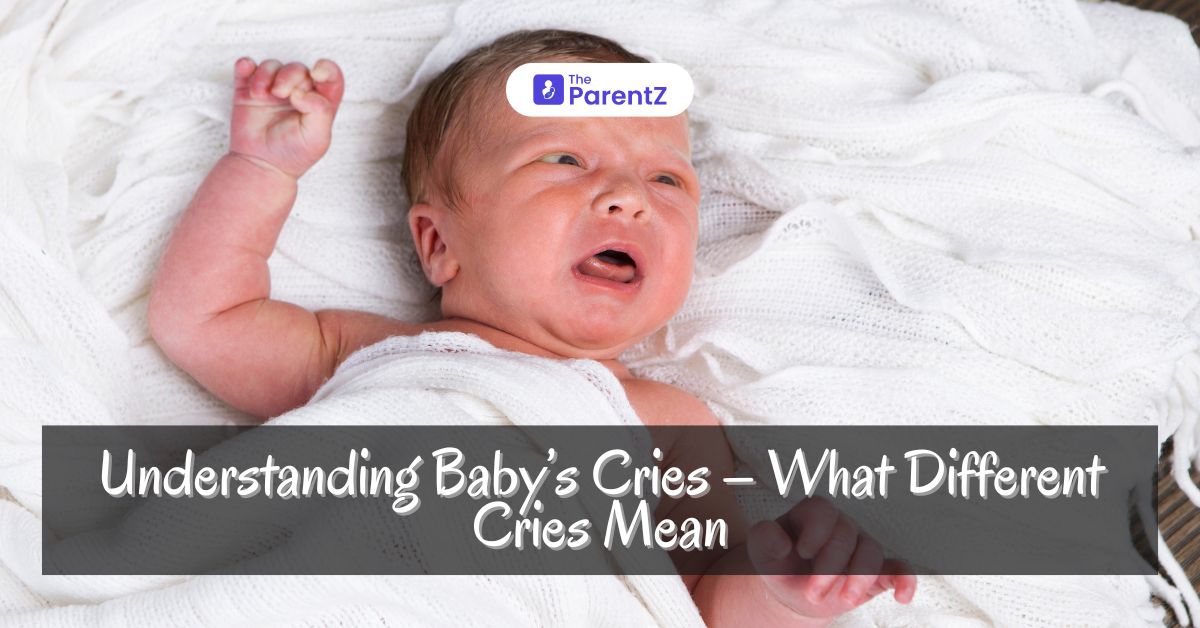Every parent, especially new moms, has experienced the anxiety that comes with trying to understand why their baby is crying. “Baby cries” are the primary way infants communicate their needs and discomforts, and deciphering these cries is essential for effective parenting. This article will guide you through the various types of baby cries, what they mean, and how to respond to them. By understanding these cues, you can better care for your baby, making both of your lives easier and more harmonious.
The Importance of Understanding Baby Cries
Understanding baby cries is crucial for several reasons. For new moms and parents, it helps in responding appropriately to the baby’s needs, fostering a sense of security and comfort for the infant. Properly identifying the reasons behind different cries can prevent potential health issues, ensure the baby’s well-being, and reduce parental stress. Effective parenting involves recognizing these cues, which can lead to a more confident and competent approach to childcare.
Types of Baby Cries and Their Meanings
Hunger Cry
A hunger cry is often characterized by a rhythmic, repetitive cry that can escalate if not addressed promptly. Newborns typically need to feed every 2-3 hours, and recognizing a hunger cry is vital for timely feeding.
Tips for Feeding on Demand:
- Look for additional hunger cues like rooting, sucking on hands, or smacking lips.
- Establish a feeding routine that suits both you and your baby, whether it’s breastfeeding or bottle-feeding.
Tired Cry
A tired cry usually starts softly and gradually becomes louder and more insistent. It often sounds whiny and may be accompanied by yawning or rubbing eyes.
Advice on Establishing a Sleep Routine:
- Observe your baby’s sleep cues and put them down to sleep before they become overtired.
- Create a consistent bedtime routine that includes calming activities such as a warm bath or gentle rocking.
Discomfort Cry
Discomfort cries are often fussy and accompanied by signs of physical discomfort. Common causes include a dirty diaper, tight clothing, or being too hot or cold.
Ways to Alleviate Discomfort:
- Check and change diapers frequently.
- Ensure your baby’s clothing is comfortable and not too tight.
- Maintain an appropriate room temperature and adjust clothing accordingly.
Pain Cry
A pain cry is typically sudden, loud, and high-pitched, and it can be more intense than other types of cries. Potential causes include colic, teething, or illness.
Recommendations for Soothing a Baby in Pain:
- If you suspect colic, try holding your baby in different positions or using gentle stomach massages.
- For teething, offer a teething ring or a cool, damp cloth to chew on.
- Always consult a pediatrician if you suspect illness or if the pain cry persists.
Boredom/Attention Cry
A cry for attention or boredom can sound like whining or fussing and usually stops when the baby is picked up or engaged in an activity.
Ideas for Engaging Activities:
- Use colorful toys, sing songs, or read books to your baby.
- Spend quality time interacting through play, which can help in their cognitive and emotional development.
Tips for Soothing a Crying Baby
Soothing a crying baby requires patience and a calm demeanor. Here are some practical tips:
- Swaddling: Wrapping your baby snugly in a blanket can provide a sense of security.
- Rocking: Gentle rocking can mimic the comforting motion experienced in the womb.
- White Noise: Sounds like a fan, a white noise machine, or soft music can help calm a baby.
Remaining calm and patient is essential as babies can sense stress and anxiety, which may make them more unsettled. Practicing these calming techniques can foster a more peaceful environment for both you and your baby.
When to Seek Professional Help
While most baby cries are normal, there are times when professional help is necessary. Consult a pediatrician if you notice any of the following signs:
- Persistent crying: Crying that lasts for an extended period despite attempts to soothe.
- Sudden changes: Abrupt changes in the baby’s crying pattern or intensity.
- Accompanying symptoms: Fever, vomiting, diarrhea, or other signs of illness.
- Difficulty feeding: Refusal to eat or drink.
It’s important to trust your instincts as a parent. If something feels wrong, seeking medical advice is always the best course of action.
Conclusion
Understanding baby cries is a fundamental aspect of effective parenting. By recognizing and responding to the different types of cries, parents, especially new moms, can ensure their baby’s needs are met, promoting comfort and well-being. Remember, every baby is unique, and it may take time to learn their specific cues. Share your experiences and tips in the comments section to help other parents on their journey.








Be the first one to comment on this story.